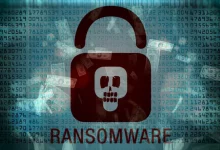Preventing Hacker Attacks: Essential Cybersecurity Measures for Individuals and Organizations
In today’s digital age, hacking attacks have become increasingly common and sophisticated. The growing reliance on technology and the interconnectedness of devices have made individuals and organizations vulnerable to cyber threats. Whether it is personal data breaches, financial fraud, or even the compromise of critical infrastructure, the impact of hackers’ activities can be devastating.
To mitigate the risk of falling victim to these attacks, individuals and organizations must take essential cybersecurity measures. By following these preventive measures, privacy, security, and peace of mind can be ensured.
1. Strong Passwords: One of the simplest yet most effective ways to prevent hackers from gaining unauthorized access is by using strong passwords. Create unique passwords that involve a combination of letters (uppercase and lowercase), numbers, and special characters. Additionally, it is crucial to avoid using easily guessable information such as birthdays, names, or common phrases.
2. Two-Factor Authentication (2FA): Implementing two-factor authentication adds an extra layer of security to your accounts. By requiring a second verification method, such as a unique code sent to your mobile device, hackers will find it significantly more difficult to breach your accounts.
3. Regular Software Updates: Stay on top of system and software updates for both personal computers and mobile devices. Often, these updates include essential security patches that address vulnerabilities discovered by developers and security experts. Regularly updating your devices ensures that you are protected against the latest cyber threats.
4. Security Software: Install and regularly update robust antivirus, anti-malware, and firewall software. These tools scan your system for any malicious programs or activities and provide real-time protection against online threats.
5. Encryption: Encrypting sensitive data, both at rest and during transmission, adds an extra layer of security. Encryption transforms data into an unreadable format, protecting it from unauthorized access.
6. Phishing Awareness: Be cautious of phishing attempts, where hackers impersonate trustworthy entities to trick users into revealing sensitive information. Watch out for suspicious emails, messages, or links, and avoid providing personal details or clicking on unknown attachments unless you are certain they are legitimate.
7. Safe Internet Practices: Exercise caution while browsing the internet. Avoid clicking on suspicious links or downloading files from unverified sources, as they may contain malware or ransomware. Stick to secure websites (HTTPS) when providing personal or financial information, and be mindful of the information you share on social media platforms.
8. Regular Backups: Create regular backups of your data and store them securely. In the event of a successful hacker attack, having backups will enable you to recover your important files without paying a ransom or losing them permanently.
9. Employee Training: For organizations, cybersecurity is a collective responsibility. Conduct regular training sessions to educate employees about the importance of safe browsing, secure password management, and recognizing potential threats like social engineering attacks.
10. Incident Response Plan: Developing an incident response plan is crucial to minimize the impact of a potential attack. Outline the steps to be followed in case of a security breach, assign responsibilities, and test the plan regularly to ensure its effectiveness.
In conclusion, understanding the risks associated with hacker attacks and proactively taking preventive measures is essential in today’s digitally driven world. By implementing strong passwords, enabling two-factor authentication, staying updated on software, and being cautious while browsing the internet, individuals and organizations can significantly reduce the risk of falling victim to cyber threats. Remember, cybersecurity is an ongoing process, requiring constant attention and adaptation to stay one step ahead of hackers.





